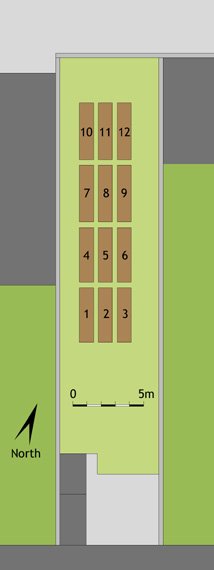April Weather
April was unusually dry and settled, weather that we would normally get in May and June! Met Éireann called it the "Warmest and sunniest April on record; dry for most of the month!"
Less than 15mm or rain fell during the entire month, almost 1/4 of what we would expect. The mean temperature was 10.6 degrees C, 2.7 degrees above average and the mean soil temperature was 12 degrees C, 2.8 degrees above normal. The total amount of solar radiation for the month (intensity of energy from the sun including overcast days) was a full 33% higher than normal (49240 Joules/sqcm) which is almost as much sun as we would expect in June!
These conditions were great for the mood of Dubliners, but not great for the garden as we didn't have enough water (and had not yet set up a hose to water the garden from the tap) and germination and growth of many seedlings was slow or non-existent. The weather was generally warm but we did have frost conditions in the Dublin area on the 4th to the 7th and again on the 26th. Although frost tender potatoes had been planted in the last week of March, they had not sprouted enough to show any damage early in the month and the frost on the 26th did not seem to hit the garden. Although the cool conditions probably delayed some of the growth and germination early in the month, adding to the lack of water.
The weather was generally warm but we did have frost conditions in the Dublin area on the 4th to the 7th and again on the 26th. Although frost tender potatoes had been planted in the last week of March, they had not sprouted enough to show any damage early in the month and the frost on the 26th did not seem to hit the garden. Although the cool conditions probably delayed some of the growth and germination early in the month, adding to the lack of water. These two graphs show the exceptionally dry and sunny conditions throughout most of April. We did not receive any rain at all until the 22nd and the 24th was the first time in more that a month that we got more than a drizzle!
These two graphs show the exceptionally dry and sunny conditions throughout most of April. We did not receive any rain at all until the 22nd and the 24th was the first time in more that a month that we got more than a drizzle!








